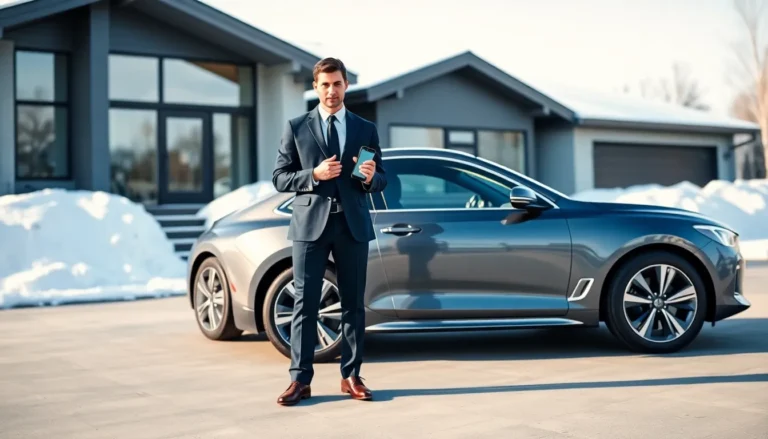Table of Contents
ToggleImagine stepping outside on a chilly winter morning, where the biting cold feels like a polar bear has taken residence on your face. You approach your car, and instead of braving the elements, you casually press a button to start the engine from the comfort of your living room. Sounds like something out of a sci-fi movie, right? Welcome to the world of remote start systems. This technology transforms the way we think about car comfort and convenience, letting you start your vehicle with just a click. But how does remote start actually work? Let’s dive deeper into this fascinating feature that combines engineering with pure convenience.
Understanding Remote Start Systems

Remote start systems have evolved significantly over the years, making it simple yet efficient to operate your vehicle remotely. At its core, a remote start system allows a driver to start their engine without being physically present in the vehicle. When you think about it, this kind of technology is part of a broader concept of automotive advancements, designed to enhance user experience.
Most systems operate through a remote transmitter or a smartphone app, making it easy to initiate your car’s ignition from a distance, usually within a 500 to 1,000 feet range. It’s almost like having your own car genie, ready to do your bidding at the touch of a button.
Types of Remote Start Systems
There are generally two types of remote start systems: factory-installed and aftermarket systems.
- Factory-installed systems: These come standard on many newer vehicles. The automaker integrates these systems during manufacturing, ensuring seamless functionality and compatibility with the car’s existing systems.
- Aftermarket systems: If your vehicle didn’t come with remote start capabilities, aftermarket options are available. These can be tailored to fit a variety of vehicle makes and models, offering additional features that factory systems may lack.
Each type offers unique advantages, so users can choose based on their preferences and vehicle requirements.
Key Components of Remote Start Technology
Understanding how remote start works requires knowing the key components involved.
- Transmitter: The remote control used to start the vehicle from a distance.
- Receiver: Installed in the car, it accepts signals from the transmitter and initiates the engine start sequence.
- Engine Management Module (EMM): This component interfaces with the car’s electronics to manage the engine startup process.
- Keyless entry functions: Many remote start systems work in tandem with the vehicle’s keyless entry system, allowing users to unlock doors while starting the engine.
These components work together harmoniously, creating a smooth user experience. Every part plays a role in ensuring that when you press that button, your request gets fulfilled efficiently.
How Remote Start Functions
The function of a remote start system involves a series of steps designed to ensure user safety and vehicle security. When you press the remote or use your app:
- Signal Transmission: A signal is sent from the transmitter to the receiver in the car.
- Security Check: The receiver verifies the signal, often through advanced security measures to prevent unauthorized access.
- Engine Initialization: If all checks pass, the system sends a command to the Engine Management Module to start the engine.
- Temperature Control Activation: Many systems are smart enough to start the heater or air conditioning, ensuring a comfortable environment by the time the driver arrives.
This multi-step process is what eventually transforms a button press into a running vehicle ready for the road, emphasizing security and comfort.
Benefits of Using Remote Start
Remote start systems come with a laundry list of benefits:
- Convenience: Start your car before heading out, no more fumbling in your pockets for keys or enduring cold mornings.
- Safety: Many systems incorporate security features that lock the doors once the engine is started, adding a layer of safety.
- Temperature Control: Arrive at a car that’s already warmed up in the winter or cooled down in the summer, comfort at its best.
- Increased Resale Value: Many potential buyers see remote start as a valuable feature, which can enhance a vehicle’s resale value.
Common Issues and Troubleshooting
While remote start systems are beneficial, they can also present challenges. Here are some common issues and their solutions:
- Signal Interference: Sometimes, physical obstructions like buildings can hinder the signal. If this happens, consider relocating to a more open space before using your remote.
- Battery Drain: If the remote doesn’t start the car, check the battery in the remote device. A low battery can disrupt communication.
- Engine Not Starting: Ensure that the vehicle is in the park or neutral position. If the vehicle isn’t properly positioned, the remote start will not engage.
If issues persist, consulting a professional installer or the manufacturer can provide targeted solutions.








